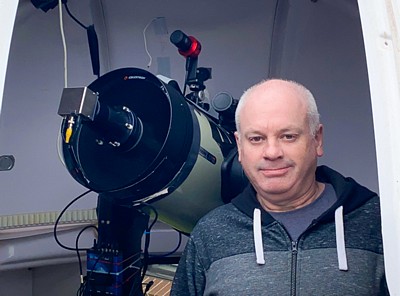Sidebar
Events Calendar
Stellar Occultations
Observing occultations of stars by solar system objects such as asteroids, dwarf planets and planetary moons, is a powerful method for measuring the sizes and shapes of these objects, refining our knowledge of their orbits, and detecting previously unknown objects in their vicinity such as rings and satellites. Using this technique, coordinated teams of amateur observers can achieve results surpassing professional observatories and even space based telescopes. It is a field in which amateurs can make real contributions to science using only fairly basic equipment and some free software tools. This has led to many collaborations between amateur and professional astronomers. I will also describe how a colleague and I were able to discover two asteroid moons using the occultation method, and how new observers can get involved in the field.
 Peter Nosworthy
Peter Nosworthy
Peter has a background in electronics and IT and has worked in the field of medical electronics (heart pacemakers and cochlear implants) and also as a software engineer in consumer electronics, stock market, and financial systems. He holds a Bachelor of Applied Science (Computing) from UTS and an Electronics Engineering Certificate from TAFE.
Peter has been an amateur astronomer since the age of 12 and served as secretary and vice president of Northern Sydney Astronomical Society (NSAS) before moving from Sydney to the darker skies of the Blue Mountains in 2012. After joining the Western Sydney Amateur Astronomy Group (WSAAG), where there was an active group of occultation observers, he became interested in stellar occultations and built an observatory (Hazelbrook Observatory) in his back yard in 2019. He has served on the committee of WSAAG since 2016 and as president since 2022.
